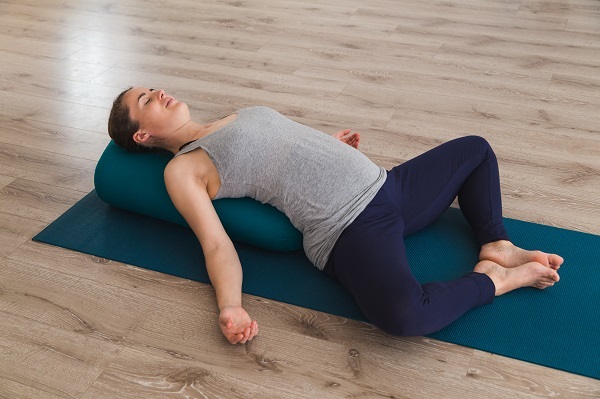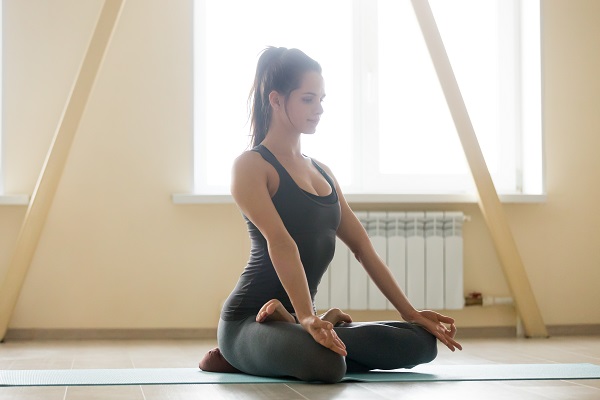
Introduction-
Are you ready to take your yoga practice to the next level? Or perhaps you’re just beginning your journey into the world of yoga and meditation. Either way, having the right yoga mat can make all the difference in your practice. With so many options available, finding the perfect yoga mat can be overwhelming. This comprehensive yoga mat guide will help you navigate the world of yoga mats, covering important factors like material, thickness, non-slip features, eco-friendliness, and more. By the end of this article, you’ll be equipped with the knowledge to choose the best yoga mat for your unique needs and preferences.
1. Types of Yoga Mats-
There are various types of yoga mats on the market, each catering to different preferences and needs. Some of the most common types include:
– Basic yoga mats: These are affordable, lightweight, and suitable for beginners. They often lack the extra cushioning and durability of higher-end mats.
– Thick yoga mats: These provide extra cushioning for a more comfortable practice, especially for those with joint pain or sensitivity.
– Non-slip yoga mats: Designed with a textured surface to prevent slipping, these mats are ideal for hot yoga or those who tend to sweat during their practice.
– Eco-friendly yoga mats: Made from sustainable materials, these mats are perfect for environmentally conscious yogis.
– Travel yoga mats: Lightweight and foldable, these mats are designed for on-the-go practice.

Yoga Mat
2. Material Matters: Choosing the Right Yoga Mat Material-
The material of a yoga mat can greatly affect its performance, durability, and eco-friendliness. Some popular yoga mat materials include:
– PVC (Polyvinyl Chloride): The most common material for yoga mats, PVC is affordable, durable, and offers a good grip. However, it is not eco-friendly and may contain harmful chemicals.
– TPE (Thermoplastic Elastomer): A eco-friendlier alternative to PVC, TPE is lightweight, recyclable, and offers excellent cushioning. It may be less durable than PVC, though.
– Natural rubber: Derived from rubber trees, natural rubber is eco-friendly, non-toxic, and offers excellent grip and cushioning. It may not be suitable for those with latex allergies, however.
– Cork: Naturally antimicrobial and eco-friendly, cork yoga mats provide a unique non-slip surface that improves with sweat. They tend to be heavier and less cushioned than other materials, though.
– Cotton and jute: These natural, eco-friendly fibers offer a more traditional yoga mat experience, with a firm, textured grip. They may lack the cushioning and durability of synthetic materials, however.
3. The Perfect Thickness: Finding Balance and Comfort-
Yoga mat thickness can greatly impact your comfort and stability during practice. Here are some guidelines to help you choose the right thickness for your needs:
– 1/16 to 1/8 inch: These thin, lightweight mats are ideal for travel or for those who prefer a stronger connection to the floor. They may not provide enough cushioning for sensitive joints, however.
– 3/16 to 1/4 inch: This is the standard thickness for most yoga mats, offering a balance of comfort and stability.
– 1/2 inch or thicker: These extra-thick mats provide ample cushioning for those with joint pain or sensitivity but may compromise stability and balance.
4. Non-Slip Yoga Mats: Ensuring Stability and Safety-
A non-slip yoga mat is essential for maintaining stability and safety during your practice. Factors that contribute to a mat’s grip include:
– Material: Natural rubber, TPE, and some PVC mats offer excellent grip, while cotton and jute mats provide a more textured surface.
– Texture: Mats with a textured or patterned surface can help prevent slipping, especially during sweaty practices like hot yoga.
– Moisture absorption: Some mats, like cork and cotton, improve their grip as they absorb moisture.
5. Eco-Friendly Yoga Mats: Practicing with a Conscience-
Eco-friendly yoga mats are made from sustainable, non-toxic materials that minimize their environmental impact. Some popular eco-friendly mat materials include:
– TPE: A recyclable, biodegradable alternative to PVC, TPE is lightweight and offers excellent cushioning.
– Natural rubber: Derived from rubber trees, natural rubber is non-toxic, biodegradable, and offers excellent grip and cushioning.
– Cork: Naturally antimicrobial and sustainably harvested, cork mats provide a unique, non-slip surface.
– Cotton and jute: These natural, biodegradable fibers offer a traditional, eco-friendly yoga mat experience.
6. Travel Yoga Mats: On-the-Go Practice-
Travel yoga mats are designed for portability, with a lightweight, foldable design that can easily fit in a suitcase or backpack. They are typically thinner than standard mats (1/16 to 1/8 inch) and may be made from PVC, TPE, natural rubber, or other materials.

Yoga Mat
7. Size Matters: Finding the Right Fit-
Yoga mats come in various sizes to accommodate different body types and practice styles. Standard yoga mats measure 68 inches long and 24 inches wide, but longer and wider options are available for taller practitioners or those who prefer more space. Consider your height, wingspan, and preferred practice style when choosing a yoga mat size.
8. Yoga Mat Care: Keeping Your Mat in Tip-Top Shape-
Proper care can extend the life of your yoga mat and keep it looking and performing its best. Some tips for yoga mat care include:
– Cleaning: Wipe your mat down with a damp cloth or use a gentle, natural yoga mat cleaner after each practice.
– Drying: Allow your mat to air dry completely before rolling or folding it to prevent mold and mildew growth.
– Rolling: Roll your mat with the top surface facing out to prevent curling edges and maintain its shape.
– Storage: Store your mat in a cool, dry place away from direct sunlight, which can cause fading and deterioration.
9. Yoga Mat Accessories: Enhancing Your Practice-
Yoga mat accessories can help enhance your practice, providing extra support, cleanliness, and comfort. Some popular yoga mat accessories include:
– Yoga mat bags: Carry and protect your mat with a stylish, functional yoga mat bag.
– Yoga mat towels: Place a towel on top of your mat to improve grip and hygiene, especially during hot or sweaty practices.
– Yoga blocks and straps: These props can help support and deepen your practice, aiding in alignment and flexibility.
10. Yoga Mat Reviews: Top Picks and Recommendations-
With so many yoga mats to choose from, it can be helpful to consult reviews and recommendations from trusted sources. Look for yoga mat reviews from reputable websites, magazines, and fellow yogis to find the best yoga mat for your needs and preferences.
11. Conclusion-
Choosing the perfect yoga mat is a personal decision that depends on factors like material, thickness, non-slip features, eco-friendliness, and size. By considering these factors and consulting yoga mat reviews, you can find the ideal mat to support and enhance your practice. With the right yoga mat in hand, you’ll be ready to take your practice to new heights and experience the many benefits yoga has to offer. Namaste!
